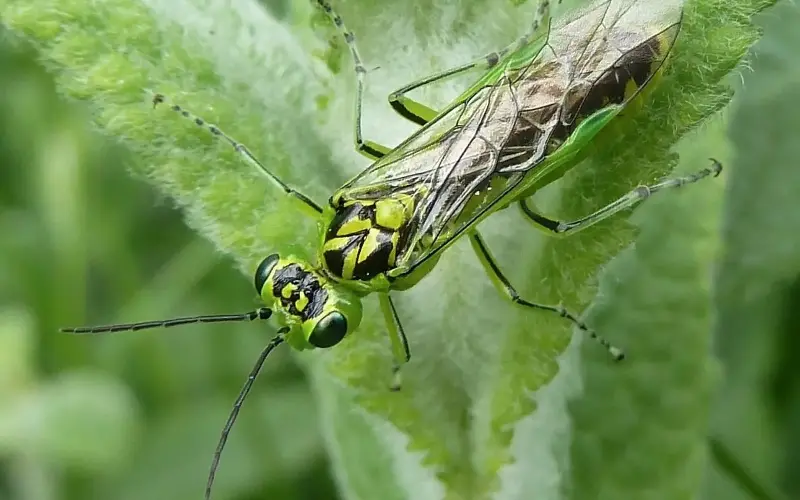
A wasp-like insect could revolutionise surgery if the way it cuts into plants can be replicated, scientists have said.
Researchers examined how female sawflies, which are related to wasps and bees, make such specific cuts into a plant when they lay their eggs.
The egg-laying organ, known as an ovipositor, is able to make instinctive and precise cuts in a plant’s leaf or stem, inserting the sawfly’s eggs without killing or causing damage to the plant.
By avoiding damage to the plant’s key functions and tubing, and evading any defence mechanisms, the larvae that are produced are able to live off the plant’s food supply.
The sawfly, which gets its name from its special ability to precisely slice through material, could now have huge ramifications for the future of surgery on humans.
Dr Verdaguer Mallorqui, the study’s lead author from Heriot-Watt University in Edinburgh, said they had “discovered something remarkable - a cutting mechanism that essentially thinks for itself”.
“The sawfly’s egg-laying organ can cut through soft plant tissue but automatically avoids the plant’s tough internal ‘plumbing’ including the tubes that carry water and nutrients,” he said.
“This ensures the plant survives and serves as a food supply for the larvae coming from the eggs.”
Dr Mallorqui said the process involves just the teeth of the saw’s interactions with the different materials of the plant.
“No sensors or computers but rather elegant engineering refined by millions of years of evolution,” he added.
The research team scaled up the sawfly’s cutting mechanism 400 times and tested it on a material, which mimics human tissue.
They found the system operated on a similar “ultimate stress threshold”, only cutting what is safe to do so with a specific force being exerted, while pushing the other material, which in theory would be the more vital structures, to the side.
Prof Marc Desmulliez, a co-author, said the “discovery has profound potential implications for surgical practice”.
He said the current surgical tools available can “struggle in complex operations” and surgeons often find themselves working in “blood-flooded environments where visibility is poor and the risk of accidentally cutting vital structures is high”.
He said a tool based on this evolutionary mechanism could help surgeons to “prevent mistakes” through its natural ability to “avoid critical tissues whilst cutting precisely where it is needed”.
“Further input is now needed from surgeons but this newly discovered mechanism has tantalising prospects,” he added.
The team used powerful microscopes and 3D imaging to map the sawflies’ teeth.
They discovered that small teeth combined with larger ridges worked together to make the clean and self-regulated cuts.
The automatic nature of this mechanism is how it could be useful for surgery, the experts said, as surgeons often work in areas where blood makes visibility poor.
Findings from the international team’s work were published in the journal Bioinspiration and Biomimetics.
